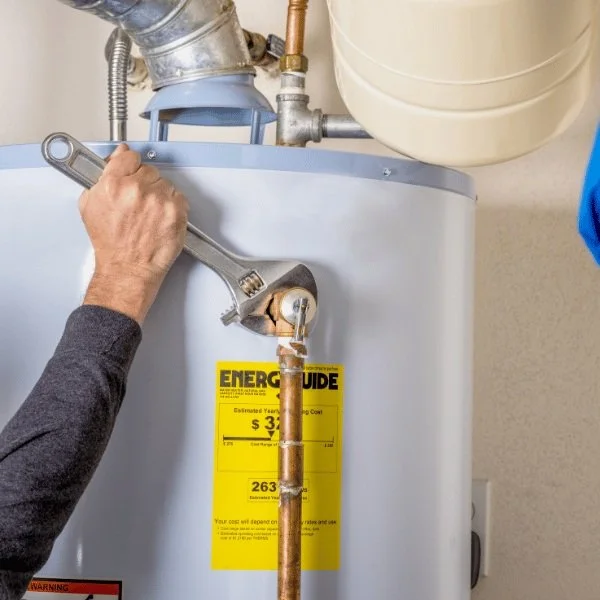The Complete Guide to Gas Line Installation
From firing up the stove for Sunday pancakes to enjoying a warm shower on a chilly morning, gas lines quietly handle the heavy lifting behind the scenes.
Gas line installation might not be the most glamorous topic, but it plays a starring role in keeping homes cozy and functional. From firing up the stove for Sunday pancakes to enjoying a warm shower on a chilly morning, gas lines quietly handle the heavy lifting behind the scenes. Whether it’s a new build or an upgrade, installing gas lines takes precision, planning, and a dash of expertise.
Understanding The Basics
Gas lines deliver natural gas or propane to various appliances such as stoves, dryers, water heaters, fireplaces, and outdoor grills. A well-installed line keeps everything running smoothly, but a poorly done job? That’s a whole different story—and one nobody wants to live through. Proper installation keeps homes safe, efficient, and up to code.
Before the installation dance begins, a few things need to happen. First, it’s important to determine which appliances can use gas. A home with multiple gas-hungry devices may need a different setup than a simple one-line installation. Once that’s mapped out, the layout of the gas lines can be designed to suit the property, with safety and accessibility leading the charge.
Materials Matter
Not all gas lines are created equal. The type of material used depends on several factors like location, appliance type, and local regulations. Common materials include black iron pipe, corrugated stainless steel tubing (CSST), copper, and polyethylene for underground applications. Each material has its charm, quirks, and use cases.
Black iron pipe is a classic—strong, durable, and widely used indoors. CSST is flexible and easier to install in tight spaces, while copper may be allowed in some regions for propane but is often a no-go for natural gas. For those lines that need to burrow underground, polyethylene comes into play. Think of it as the secret agent of gas lines—tough, undercover, and reliable.
Planning Like A Pro
Good planning makes the installation process smoother than a buttered skillet. The route of the gas line should be carefully plotted to avoid obstacles and reduce the number of fittings. Every connection increases the potential for leaks, so the fewer the better.
Pressure requirements are also a key part of the puzzle. Appliances need a consistent flow of gas at the right pressure, or things can go sideways fast. The line’s diameter, length, and the total demand from appliances all influence pressure. A properly sized system keeps everything humming along without any hiccups.
Permits And Codes
Nobody enjoys paperwork, but permits and inspections play an important role in safe gas line installation. Local municipalities often require permits for this kind of work, along with a follow-up inspection to confirm everything meets code.
Codes can vary from one area to another, but they all exist for good reason. They protect properties and lives by holding installations to a consistent standard. Working with a licensed professional keeps the process compliant and reduces the risk of costly do-overs.
The Installation Process
Once the plan is in place, it’s time to roll up those sleeves and start the installation. The process begins with shutting off the main gas supply—safety first. Pipes or tubing are then measured, cut, and fitted along the predetermined path.
Every connection is sealed tightly, using thread sealant or tape rated for gas lines. After the system is assembled, it’s time for the leak test. Pressure testing the line confirms everything is tight and secure. No hissing, no surprises.
Once the line passes inspection, the gas supply can be turned back on, and appliances can be connected. Like plugging in a lamp, only slightly more sophisticated—and far more satisfying.
Safety First, Second, And Always
When dealing with gas, there’s no room for shortcuts. Even a small leak can lead to major issues. That’s why it’s critical to rely on licensed professionals for installation and inspection. DIY might work for shelves or planter boxes, but gas lines deserve a pro’s touch.
After installation, regular maintenance checks can keep things in good working order. Watch out for signs like unusual odors, hissing sounds, or pilot lights going out. These subtle signals can be early warnings that something needs attention.
Benefits Of A Well-Installed Gas Line
A professionally installed gas line offers more than peace of mind. It also boosts home efficiency, saves money on energy bills, and supports environmentally friendly energy use. Natural gas burns cleaner than many other fuels, making it a solid choice for households aiming for comfort without compromise.
Plus, a proper gas line setup adds versatility to a home. Thinking of adding a backyard fire pit or an outdoor kitchen someday? A thoughtfully designed system can accommodate future upgrades without the need to start from scratch.
Choosing The Right Team
Installing gas lines isn’t a one-size-fits-all job. Every home has its own layout, needs, and quirks. Working with an experienced, licensed professional makes all the difference. They’ll know the local codes, understand the best materials for the job, and bring the right tools and techniques to the table.
A reliable team takes the mystery out of the process. They’ll handle everything from permits to pressure testing with the confidence of someone who’s done it hundreds of times—and still takes pride in every job.
Wrapping It All Up
Gas line installation might not make for the most exciting dinner party conversation, but it plays a critical role in daily life. Whether it’s powering the oven, warming a room, or setting the stage for backyard grilling, a solid installation delivers comfort and reliability day in and day out.
When done right, it quietly supports the heartbeat of a home—safe, steady, and always ready to serve.

